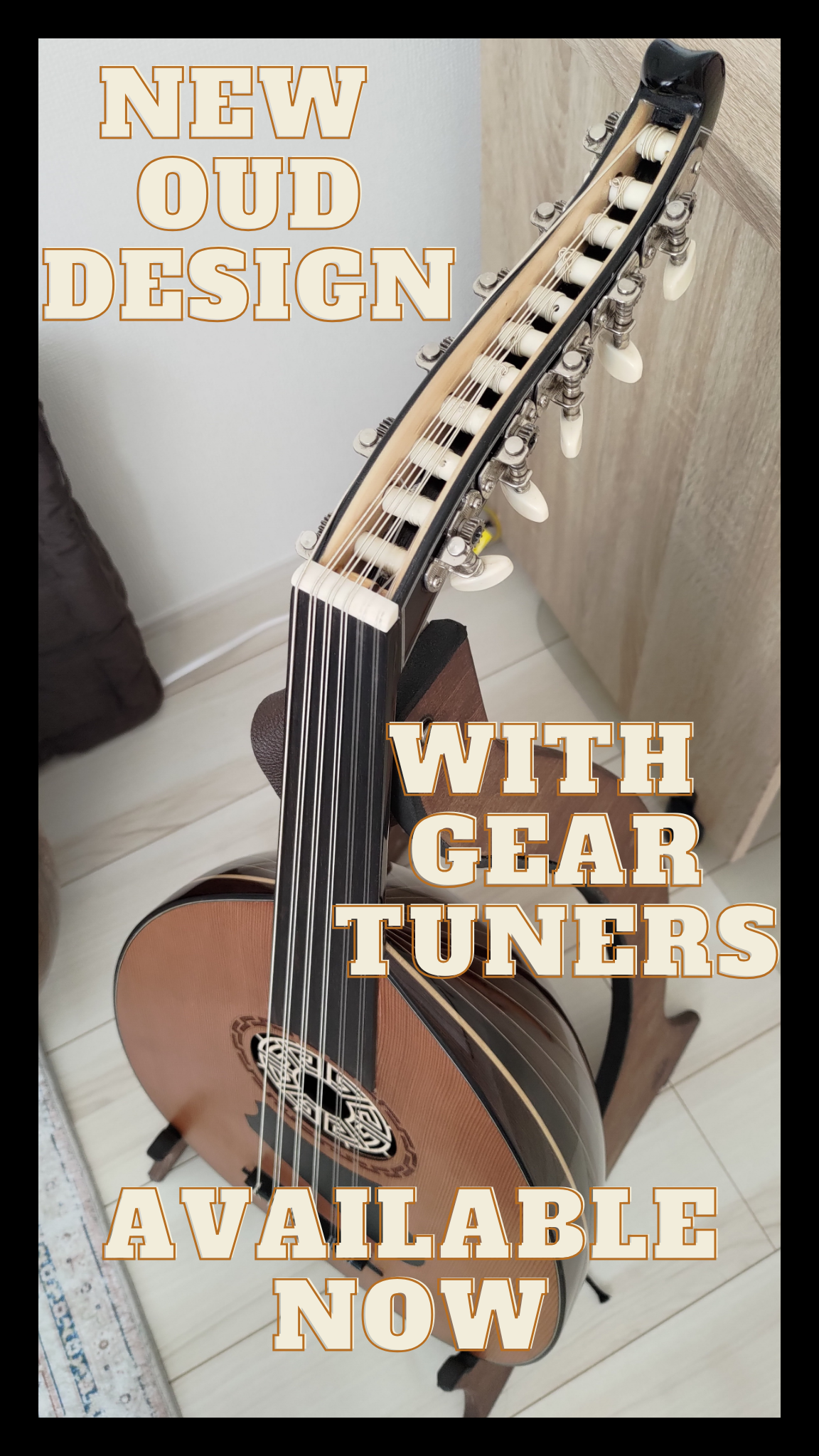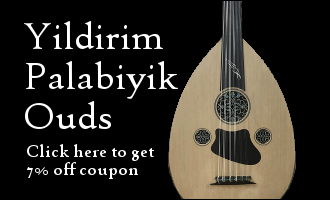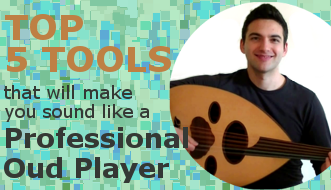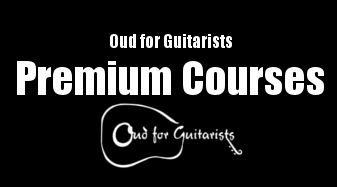 Maqam Mystery
Maqam Mystery
What really are maqams? You’re not the only one asking this question. In fact, we keep on hearing from our readers over and over again, “How can I learn all maqams? How can I play them authentically?”
Learning and playing maqamat seems very difficult at first. It is hard to remember them all, and all the proper pathways to modulate to a different maqam…
Or is it?
Is there are better way to learn maqamat?
Maqamat was only relatively recently put into notation form as we use in Western music, but before this time it was passed down mostly by ear from master to student.
The truest form of this can be seen in traditional Indian music where music is taught by repetition. This used to be the case in Iran as well, but nowadays the use of notation is standard even though it is an inadequate medium for learning maqam music. It does the job, but it is not perfect in being able to transmit all the nuances and subtleties of Middle Eastern music. But this is another topic…
The Beginning
To start, the best way to learn maqamat is to stop thinking about them in terms of scale or scales. The use of the word scale to translate maqam is poor. It is even better to translate maqam as mode, as in modal music. Do you remember the Greek modes from Music Theory class? Aeolian? Phrygian? Yes, rings a bell… Well… this modality exists in Maqam music as well, but it still doesn’t tell you what “scale” or what set of notes we are using…
Greek Modes
The Greek modes can be created by taking the C major scale and shifting the starting note…
C D E F G A B C (Ionian mode) (Maqam Ajam)
Now take the same notes but start on D this time…
D E F G A B C D (Dorian)
and again…
E F G A B C D E (Phrygian) (This is also Maqam Kurd too by the way)
keep going until B
F G A B C D E F (Lydian)
G A B C D E F G (Mixolydian)
A B C D E F G A (Aeolian) (Natural minor scale)
B C D E F G A B (Locrian)
Now you know all the modes.
Does this exist in Maqam music?
In fact, it does…
In Turkish music, notes are called Yakah, Dugah, Sikah, Chargah, etc… These words come from Farsi which means “first place”, “second place”, “third place”, and “fourth place”. In Arabic music, there also exists a Maqam called Yakah, which shares the same interval as Maqam Rast but starts on G…
Yakah
G A Bqb C D E Fq# G
Rast
C D Eqb F G A Bqb C
Same interval, different starting point.
Let’s imagine Yakah started on C like Rast. In other words the notes would be…
C D Eqb F G A Bqb C
Another well-known Maqam is Sikah, Sikah means third place… see the pattern here?
Eqb F G A Bqb C D Eqb
Same scale, different starting note. But it is a different maqam with a different way of being played and expressed.
So this is one way in which maqamat are different from scales. They are more like modes.
The Building Blocks of Maqammat: Trichord, Tetrachord, Pentachord
In Middle Eastern music particularly Turkish and Arabic music, maqam and described in terms of Ajna (plural) and Jins (singular).
Jins in English are represented as groups of three to five notes which are called, trichord, tetrachord, and pentachord.
These are small sequences of notes that are defined by different intervals. For example, a Jins called Ajam is defined by four notes with the interval “whole-step”, “whole-step”, “half-step”, or C, D, E, F
Also… F, G, A, Bb
or even
G, A, B, C
Maqams are usually made up of two to three different Ajna. For example:
Maqam Shawq Afza
C D E F G Ab B C
Ajam C D E F
Hijaz G Ab B C
Sometimes F is included in the Jins for Ajam as in, C D E F
Let’s see another example:
Maqam Hijaz Kar
C Db E F G Ab B C
Hijaz C Db E F
Hijaz G Ab B C
Two Hijaz tetrachords placed back to back.
Now you can see that Maqams are created by putting sets of Jins together.
Modulation
Modulation occurs in many ways. One way was referred to above when we dealt with modes. Meaning we change the starting point of the Maqam from one note to another note creating the feeling of a different set of intervals between notes. The more mysterious way modulation occurs is when you replace one Jins with a different one!
Let’s take Maqam Ajam (Ajam is the name of a Jins and a Maqam)
C D E F G A B C
Maqam Ajam is made up of two sets of Jins Ajam:
Ajam C D E F
Ajam G A B C
Maqam Shawq Afza
C D E F G Ab B C
Maqam Ajam and Maqam Shawq Afza are in the same family, because they both begin with Jins Ajam C D E.
They differ in the Jins in the upper range of notes, past the 5th degree (G).
A way that you can modulate between Maqam Ajam and Maqam Shawq Afza is to change the upper Ajam tetrachord from Ajam to Hijaz…
Ajam tetrachord G A B C
to
Hijaz tetrachord G Ab B C
So the better you understand what sets of notes make up a Maqam, the better you’ll be able to learn how to modulate.
Melodic Grammar
A friend of mine, Edward Powell, made a comment on Mike’s Oud Forums that made a lot of sense.
He spoke about getting past thinking in terms of scales. He said that there are no scales in Middle Eastern music. Instead, what Middle Eastern music has is Melodic Grammar.
This is a very interesting fact, especially considering this new research that shows that our brains process music much like spoken language…
Brain Processes Music Much Like Spoken Language
Maqam Mastery
In my own experience, this seems to be true. That’s why it is easier for people who grow up hearing the music from a young age tend to “get” the music easier than Westerners. But this doesn’t have to be the case, as long as you listen a lot and have the correct ear training.
That seems to be one of the biggest issues with learning Middle Eastern music, is that it is so unintelligible on the surface, or there are so many “out of tune” notes.
In lieu of this issue, Oud for Guitarists has a new concept for learning maqamat and modulation that we want to share with you. It’s called the Maqam Mastery Program, and with this powerful program, Oud learners will be able to bridge the gap between cultures and learn the melodic grammar of Maqam music by ear training exercises and video sessions.
Check out the pre-sale which is starting tomorrow for a limited time only. If you want to hear about it, enter your name and email address below and get updates from us!
Photo credit: paukrus






I would like to sign up for the complete Maqam Mastery program. I couldn’t find the link nor a registration form on the site…
Just the same, count me in,
Alf
Hi Alf! Thank you for your interest. Please check your email 🙂